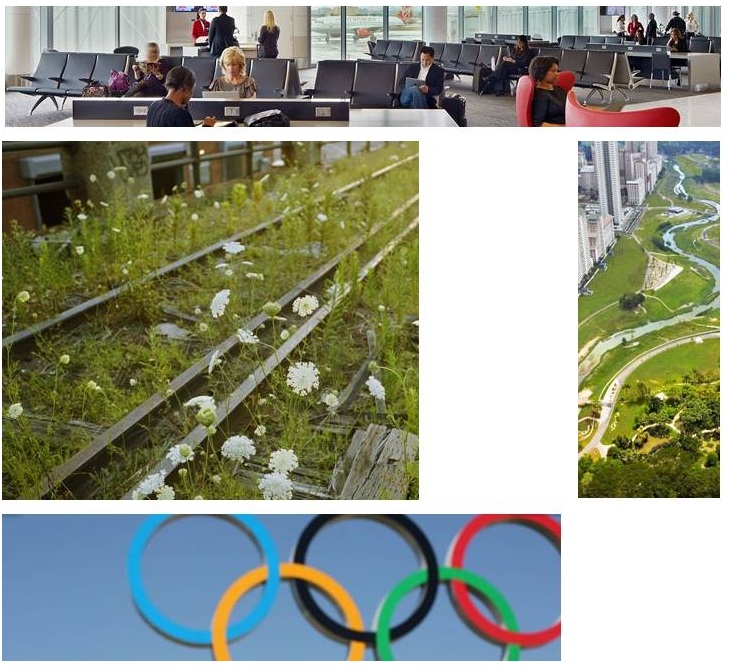 London 2012 Olympic Park opens. After six years of planning, preparation and construction, the Opening Ceremony on July 27 will mark the start of the 2012 Summer Olympics.
London 2012 Olympic Park opens. After six years of planning, preparation and construction, the Opening Ceremony on July 27 will mark the start of the 2012 Summer Olympics.
The $1.1 billion Olympic Park contains several of the 2012 Games' biggest sporting venues, including the Olympic Stadium and the Zaha Hadid-designed Aquatics Centre, as well as the Olympic Village. And towering over the Olympic Park is Anish Kapoor's controversial ArcelorMittal Orbit observation tower, which is made from recycled steel and has received mixed reviews from observers.
Via Inhabitat
Park in Singapore shows what a river can do. Singapore is heavily dependent on Malaysia for its water supply but is now creating new sustainable parks designed to reduce its reliance.
Atelier Dreiseitl has designed a 62-acre Bishan-Ang Mo Kio Park that recreates nature, transforming a 2.7-kilometer concrete-channel lined river into a 3-kilometer natural meandering system. At the same time, the new system slows down and stores some of the rainfall that hits the city-state. The park is a model for how cities can transform outmoded, broken systems into natural systems.
Via The Dirt
We need another kind of place. Tim Pittman blogs about how most of our current workplaces are designed around connection, and how mobile technology has affected our work and home lives.
“That invasion has collateral damage. The victim, as I see it, is the ‘third places’ that make our neighborhoods and cities vibrant, pleasant, and engaging places to live. These places, originally defined by Ray Oldenberg as places that are non-work and non-home, allow us to maintain time and space (both mentally and physically) outside the formal responsibilities of our daily lives. These are the spaces that let our minds wander and push us to develop productive social connections.” – Tim Pittman
Transforming NYC’s High Line to public space. Mayor Mike Bloomberg this week announced the City’s acquisition of the High Line at the rail yards from CSX Transportation, Inc., a historic milestone for the High Line.
The elevated railway viaduct, originally built in 1934 to carry freight trains, now marks the latest step in a long history of CSX’s visionary support for the transformation of the High Line into a public park.
Via the High Line blog
Buildings that evolve with the city. Resilient cities need infrastructure that lasts and planning teams that are willing to step up to the plate. Developing cities that thrive through the ebb and flow of time are not simply about creating infrastructure that can persist, but about designing buildings that evolve as cities evolve.
The Tempe Transportation Center in Tempe, Arizona, has been constructed to adapt to the City’s needs for approximately 100 years. The longevity of the structure is depicted in its fundamental design plan as it focuses on combining resilient building materials with the natural benefits of a desert environment to create heat and water systems that are more energy efficient and spaces that provide natural sunlight and shading.
